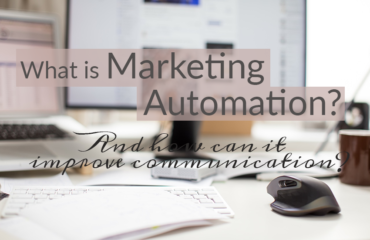Tips for Aligning Your Content Strategy with Mobile-First Consumers
Mobile devices give consumers the power to interact with brands and service providers in highly personalized ways, using them as their go-to medium to get what they want, when they want it. Along the way they’ve become increasingly more savvy and discriminating users. As mobile continues to take over consumer hearts and minds, marketers are wise to create a content strategy for mobile that keeps pace. The opportunity for mobile engagement is huge, but to seize it you first need to understand the mobile consumer mindset.
The Mobile-First Consumer
The “mobile consumer mindset” is nothing more than targeting your marketing to potential buyers’ digital habits, preferences, lifestyles, and emotional triggers. But how do you stand out in a crowded market? By engaging consumers with content that shows you understand their mindset and motivations better than the other competition. You achieve this by building buyer personas that reflect your targeted buyers’ motivations. Once you’ve built unique and insightful personas, you’re able to craft more effective messaging.
A Better Content Strategy for Mobile
In 2016, digital ad revenues in the U.S. grew 22% and totaled $72.5 billion, powered heavily by gains in mobile. That’s a big jump from the previous year, and it’s only expected to grow. There’s no magic formula for ensuring your content will be useful on every device, but you can change the way you think about and create content so that it’s accessible wherever you need it to be.
The App’s the Thing. Over 90% of consumer’s mobile time is spent in apps and, according to Google, 50% of them are using apps to make purchase decisions. The takeaway? In-app is the most powerful mobile marketing environment available to marketers today. In-app is a great way for your brand to directly and effectively engage consumers who are ready to hear what you have to say. Driven by the moment, app users constantly turn to their phones in search of whatever they instantly need to know. It’s up to marketers to design useful, relevant in-app content that aligns with those needs.
Success is Location Dependent. Savvy mobile marketers know it pays to target consumers with location-specific mobile ads that meet them where they are. For local businesses trying to grow revenue, location data allows them to better align with consumers based on prior mobile activity and device information. By using the insight you gain from analyzing your audience’s behavior and state of mind, geo-targeting becomes a great opportunity for you to drive purchases.
Devices Dictate Content. Mobile-first users consume content differently and the type they choose to consume is dictated by which device they’re using. Computers are used most often, in order, for news, social media posts, videos, and research, while social media posts top the list for smart phones and tablets, so plan accordingly.
Optimize Content. Give your audience the content they want – and need. While mobile-driven content needs to be easily digestible, it must have something of value to say. Otherwise, your audience will not return for more. Keep it engaging and informative by creating clickable headlines, and writing content that provides value. Finally, to stay on trend, make sure your content is optimized for voice search by including long tail keywords and focusing on questions most likely to be asked in voice – such as directions to the nearest coffeehouse.
Whether you call it mobile-first marketing, or content marketing on mobile, your ideal content strategy for mobile is all about understanding your audience and using insights to design a customer experience that is enjoyable and relatable. Mobile’s role is only going to increase, so you’ll need to continually go back to your data to update that understanding and insight to reflect current consumer habits.







